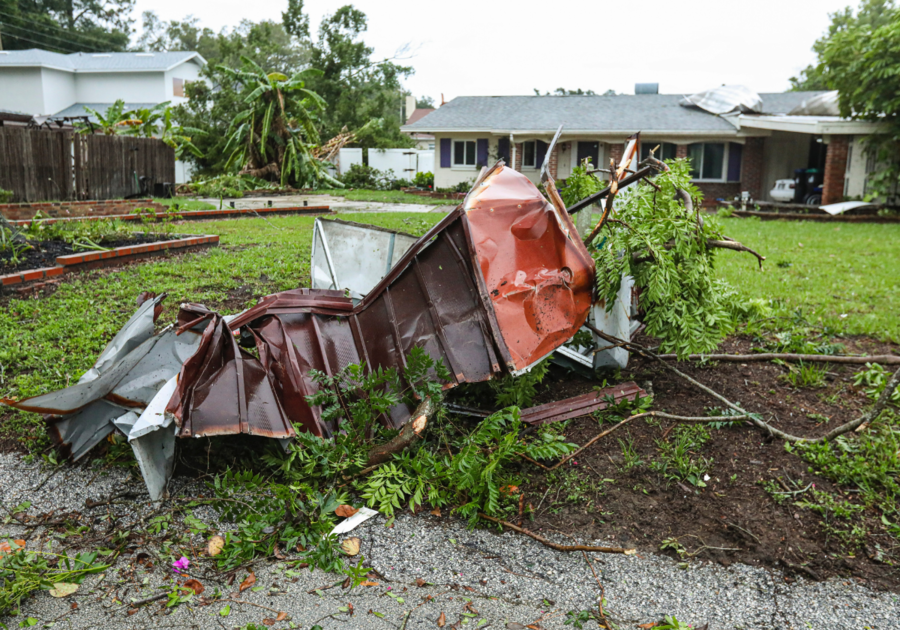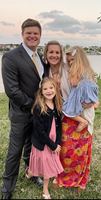On December 30, 2021 a small grass fire ignited in Boulder County, Colorado and quickly spread to the cities of Superior (population 13,000) and Louisville (population 21,000). Fueled by a warm, dry winter and 115+ mph wind gusts, it wasn’t long before all 34,000 residents were evacuated, often with just minutes to spare before flames overtook their homes. The following night heavy snowfall put a definite end to the fire, but not before destroying 1,084 structures and burning 6,200 acres.
It was the day after the Marshall Fire and I walked around my home collecting items I no longer needed or could do without and put them into a box – toddler clothes my girls had grown out of; duplicate kitchen utensils accumulated over the years; home decor that wasn’t really my style anymore; etc. When the box was full, I went online to search for a place where I could bring my donations. To my surprise every one of the local organizations and community centers all had the same, resounding message: DO NOT BRING DONATIONS. And I started to wonder, is this a typical response after a disaster?
As it turns out, there’s a nickname for this phenomenon in the emergency response industry and it’s called the “second disaster.” The second disaster occurs when the community overwhelms a disaster area with unsolicited donations and leaves emergency personnel the task of receiving and managing the goods. People want to give out of the goodness of their hearts, but unknowingly exasperate the challenges of disaster response. FEMA states, “knowing what is needed, where it is needed, and getting it there at the right time is the key.”
After devastating Florida's southwest coast, Hurricane Ian has left hundreds of thousands of Floridians displaced from their communities. So you’re probably asking yourself as I did… How do I best help without hurting? Below are two practical ways to give without overwhelming emergency management.
CASH GIFTS TO LOCAL ORGANIZATIONS
After a disaster you’ve probably heard it said that cash is best, and with good reason. Cash is flexible, allowing organizations to respond to needs in real time and assess exactly what is needed. These needs can change rapidly from day to day and even hour to hour. If you hear, for example, that cases of water are hard to come by and send some in the mail, by the time it reaches the destination it may no longer be needed. Additionally, it costs much more to send a case of water than it does to donate to an organization working in the area who can buy a case of water locally. Reinvesting into a local, disaster-affected economy is another reason why cash is best. See Sarasota’s list of trusted, local organizations who are helping the community.
IN-KIND DONATIONS TO INDIVIDUALS
After the Marshall Fire, I learned that only after a disaster occurs do too many families discover their home was underinsured or worse, not insured at all. In fact, it is estimated that 2 out of every 3 homes are underinsured nationwide. With the burden of reconstruction costs weighing them down, many families will gladly accept in-kind donations (donations of goods, services or time—instead of cash). That’s where Rebuild comes in.
For survivors of natural disasters who are rebuilding their home, Rebuild is a universal registry tool where people can list items needing replacement that were lost or damaged. Unlike a typical wedding or baby registry with a retail store, Rebuild registries allow users to distinguish between items they’d prefer new (i.e. towels, bedding) and items they would accept second hand (i.e. girls size 2T clothing). Then donors can shop a registry and help a family get exactly what they need when the timing is right for them.
REBUILD
I created Rebuild after my own community in Colorado was impacted by a disaster and I hope it will bring value to Floridians as well. Rebuild just recently launched and we’re looking for beta users to test our web app. If you or someone you know sustained storm damage from Hurricane Ian and need help rebuilding your home, you can click here to create a Rebuild registry. And if you’re interested in donating to people impacted by natural disasters, you can click here to shop people’s registries.
In the wake of fires, floods, and storms, hundreds of thousands of families are forced to start anew each year. Rebuild is there to help.
Lauren Kemp is the founder of Rebuild, an online platform harnessing the power of social giving to connect survivors displaced by natural disasters with donors wishing to help people rebuild their homes.



